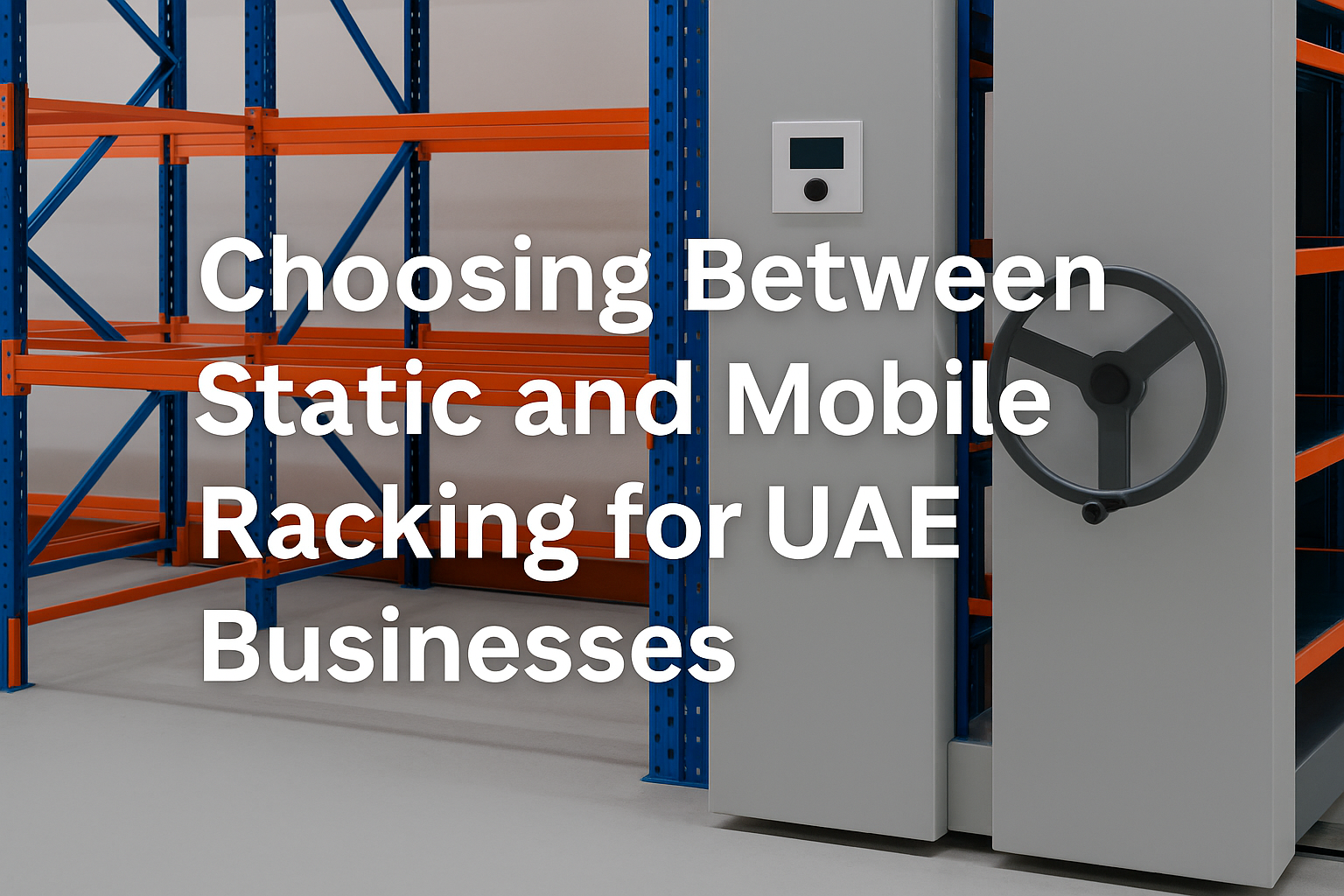
In the fast-paced business landscape of the UAE, warehouses are no longer just storage facilities they’re strategic hubs that determine operational efficiency and profitability. With real estate costs at a premium, choosing the right racking system can mean the difference between streamlined operations and costly inefficiencies. The big decision for many warehouse managers comes down to static racking versus mobile racking.
This guide breaks down the advantages and considerations of each, helping UAE businesses make an informed investment.
Static Racking: The Traditional Workhorse
Static racking systems remain fixed in place, offering a stable and reliable structure. They are particularly effective for businesses that handle a high volume of fast-moving SKUs.
Advantages of Static Racking:
- Cost-Effective Setup – Lower initial investment compared to mobile systems.
- Durability – Ideal for heavy-duty use and long-term storage.
- Easy Maintenance – Simple to repair, reconfigure, or expand as needed.
- Quick Access – Fixed aisles allow for faster order picking, perfect for high-turnover inventory.
Best For:
Businesses in Dubai with high SKU variety, predictable demand, and the need for constant access to products.
Mobile Racking: Maximizing Space Efficiency
Mobile racking systems operate on movable bases, allowing racks to slide along tracks. By eliminating fixed aisles, they optimize storage density—often doubling the usable space in the same footprint.
Advantages of Mobile Racking:
- Superior Space Utilization – Ideal for facilities where real estate costs are high.
- Flexibility – Adjustable for seasonal stock or fluctuating inventory levels.
- Enhanced Security – Racks can be closed off when not in use, protecting valuable stock.
Best For:
Businesses facing space constraints, such as cold storage facilities, e-commerce warehouses, and companies managing slow-to-medium-moving inventory.
Key Considerations for UAE Businesses
- Climate Conditions: Ensure racking materials withstand UAE’s high humidity and temperature fluctuations.
- Operational Workflow: Consider whether your picking process prioritizes accessibility (static) or capacity (mobile).
- Budget and ROI: While mobile systems have a higher upfront cost, the long-term space savings may offset initial expenses.
- Safety Compliance: Both systems must meet Dubai Municipality and Civil Defence regulations.
How to Decide
- Evaluate Storage Needs: Analyze SKU velocity, inventory turnover, and required accessibility.
- Assess Available Space: Factor in future expansion plans and real estate costs.
- Consult with Experts: Work with a trusted racking solutions provider familiar with the UAE market to customize your setup.
Facts
The choice between static and mobile racking comes down to your operational priorities. For businesses prioritizing access and simplicity, static racking remains a robust option. For those needing to maximize space in expensive or compact facilities, mobile racking delivers unmatched efficiency.
In a competitive market like Dubai, aligning your racking system with your business goals ensures you’re not just storing goods you’re building a foundation for growth.
Static racking is fixed in place with permanent aisles, while mobile racking moves along tracks to reduce the number of aisles and maximize storage density.
Mobile racking is often more cost-effective in areas with expensive real estate because it maximizes storage capacity within the same footprint.
Yes, mobile systems need regular track and mechanism inspections to ensure smooth operation, but overall maintenance costs are manageable.
In most cases, yes provided your warehouse layout and floor load-bearing capacity are compatible with mobile systems.
Consider inventory turnover, picking methods, available space, and future growth. A local racking expert can help assess your specific needs.